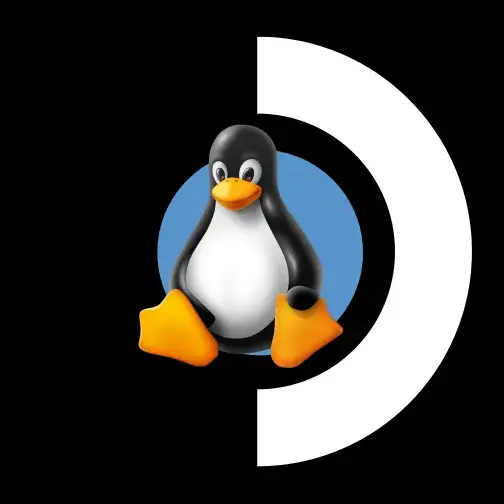

I remember quite well burning an Ubuntu 9.04 Live CD, and before that trying an ancient Knoppix Live CD that my dad had laying in a drawer. I must have been 15 back then.


I remember quite well burning an Ubuntu 9.04 Live CD, and before that trying an ancient Knoppix Live CD that my dad had laying in a drawer. I must have been 15 back then.
There’s an issue on Bazzite’s repo asking for new-lg4ff and other kernel modules to be added. While the issue is still open, it describes a workaround[1][2] but it requires building the DKMS module and layering it on top of Bazzite on every kernel update.
Edit: re-reading your post and Oversteer’s README your wheel should be supported by the default kernel, I’m not sure new-lg4ff will fix your issue (and the latter does not list the G920). The issue must be somewhere else. I wish I could help you, but I have yet to try Assetto Corsa and Dirt Rally with my Driving Force GT on Bazzite.
I haven’t used an immutable distro, but if it’s a problem, I’m sure that there’s a way to defeat the immutability. If it just mounts the root filesystem read-only, then
# mount -o remount,rw /Will probably do it.
It will work until the next reboot (and I believe it won’t work on Fedora 42 as it now uses composefs), on Fedora Atomic Desktops you have to use layers to add additional packages using rpm-ostree
(Edit: formatting)
This. Just setup fail2ban or similar in front of Jellyfin and you’ll be fine.


That sentence intrigues me
we did something that’s somewhere in between a software emulator and hardware compatibility
What do they emulate vs. what was added in hardware to ensure compatibility?


It’s for far more than just deploying VMs: you can create pretty much anything you can on a cloud provider, such as databases, network rules, access tokens, object storage, etc.


Terraform is part of a movement called “Infrastructure as Code” (IaC) which allows engineers to define their cloud infrastructure using code.
This is extremely useful as it allows you to:
version infrastructure changes
automate resource and configuration creation and management
have reproducible environments (think production and staging envs, or deploying a new production env to another datacenter)
Terraform (and OpenTofu) is different to most IaC project as it is agnostic of cloud providers: you can use it to deploy infrastructure to multiple providers, where their competitors are limited to their own platform (I think of AWS’s Cloud Development Kit)


Epic putting the work to make their anticheat compatible with Windows-on-ARM but cannot be bothered to do the same for Linux… 🙄


The metacritics score is in the low 60s and having played the game at release I was mostly underwhelmed.


I’m not one to defend DRMs, but they rarely play a part in games sales. In the case of BF2042, I believe other factors played much bigger roles: bug-ridden beta (and early release), confusing hero system and gameplay, and missing features.


Finally! I have been waiting for a PC port for so many years! I might have to buy and replay Part I tho, I haven’t played it since its release on PS3… 11 years ago?!


Yeah, the janky foundation made me and my boss wish we chose Java for the back-end multiple times. I like async / await (or coroutines in Kotlin-land), it’s easier to wrap my head around than Promises / Futures and I thought I would miss Reactive Programming, but not that much.


Yet, people willingly choose to use one of the most horrific ecosystems out there.
So far I have heard the following explanations for going full-stack JS
Ability to re-use business logic in back-end and front-end
Reduced context switching (though with frameworks that’s less true)
You don’t have to recruit developers proficient in your back-end language in addition to Javascript
Personally, having worked on a full-stack Typescript project for the past year, I kinda miss the maturity of Java’s ecosystem: there is usually one mature and well-maintained library that does its job really well ; while in Javascript-land there are multiple libraries for a single job, each with varying quality and maturity, and most of them are no longer maintained.


It’s amazing how PC Gamer are able to spin lenghty articles out of a couple of sentences from the Half-Life 2 20th Anniversary documentary. It’s the third one so far according to my own count.


Not directly, but if the developers would call some global variable set by a third-party library that’s blocked by an ad-blocker (say GTM) without checking if said variable is set first, that probably could trigger that error.


I believe they would need to follow @ap.brid.gy first, which they don’t.


Parents, maybe? They are usually so concerned about children’s safety, whether that’s their kids or someone else’s.


It will end up being analogous to Uber and Lyft, and neither helps reducing the amount of cars on the road.


Hum, I never considered this option, though a bug in the CAN bus is more likely than brake lights being out. Some Renault cars were notorious for this, but in this instance I believe it was a Volkswagen Touran.
Fedora Atomic Desktop 42 switched to composefs, which has a small full partition mounted to
/. Your “real” filesystem is mounted on/sysroothttps://fedoraproject.org/wiki/Changes/ComposefsAtomicDesktops